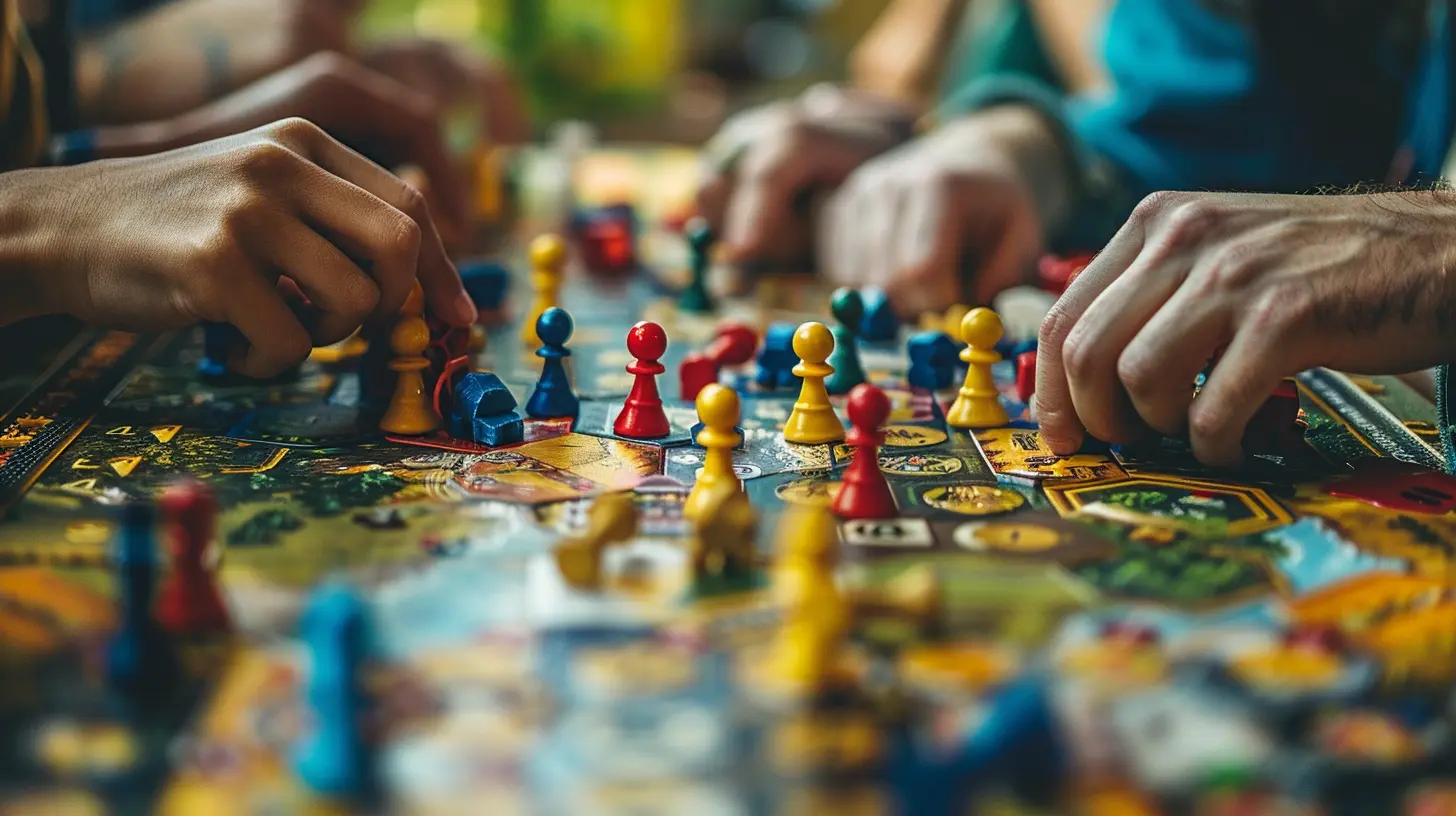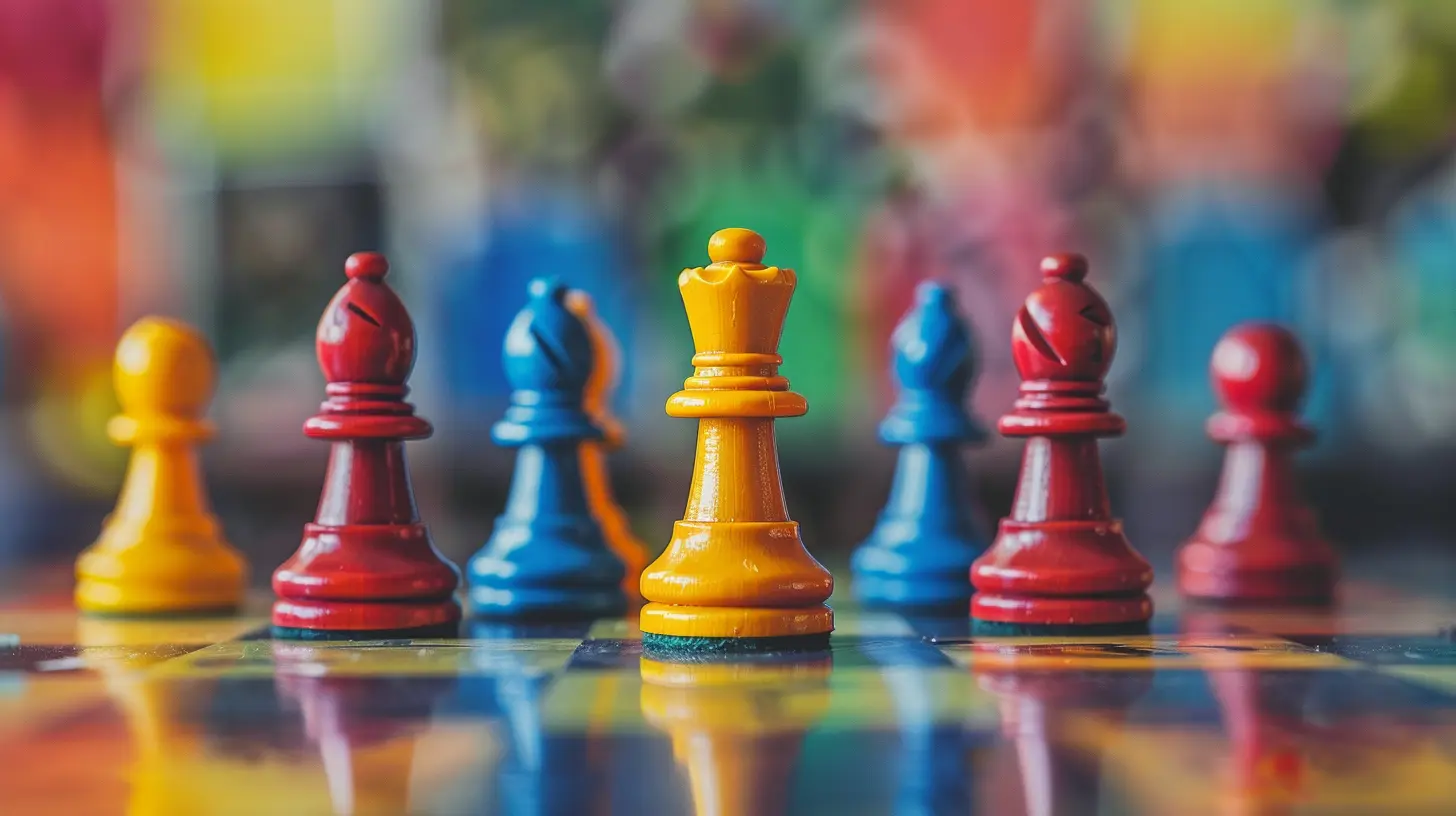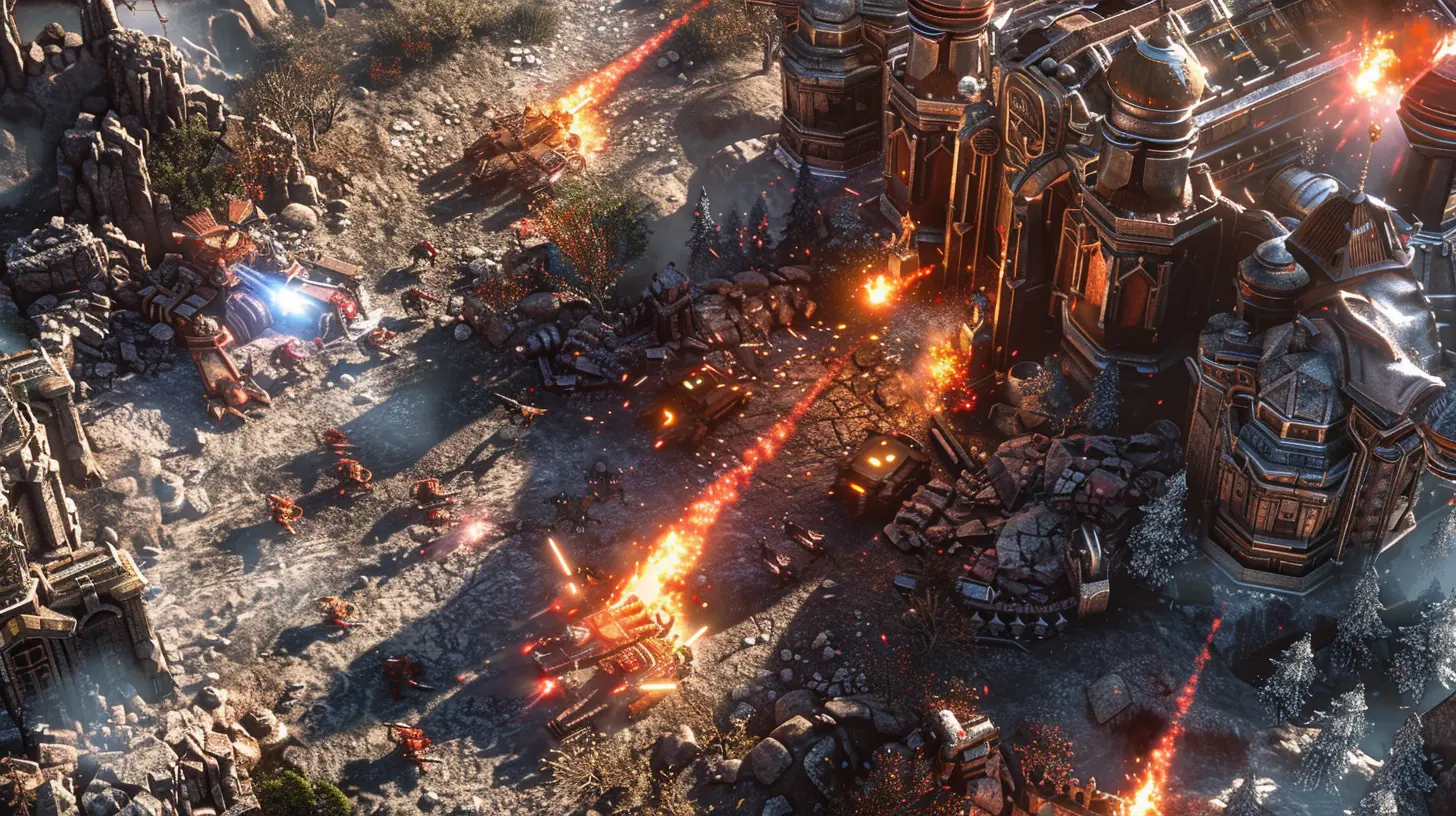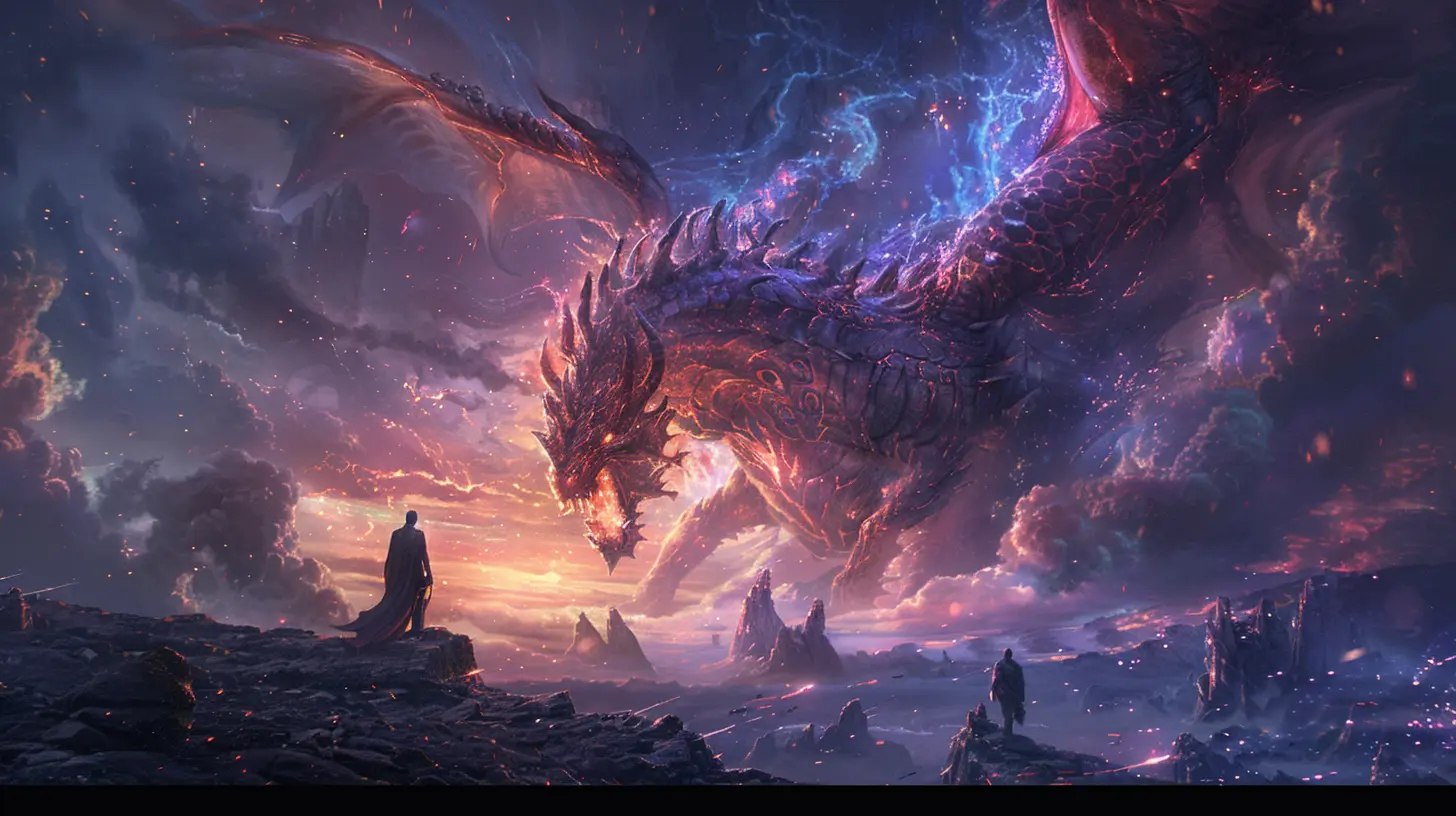Understanding Meta Shifts in Competitive Play
7 July 2025
If you've been playing games competitively—whether it’s MOBAs like League of Legends, shooters like Valorant, or card games like Hearthstone—you’ve probably heard the term meta thrown around a lot. But what exactly is it? And more importantly, why does it shift so much?
Let’s break it all down in plain English. By the end of this article, you’ll have a solid grip on what meta shifts are, why they matter, and how to stay ahead of the curve in competitive play.
What Is the “Meta,” Anyway?
“Meta” is short for “metagame,” which basically means the game outside the game. It’s not about the rules written in the manual but about how players interpret and optimize the current state of the game. It’s the evolving strategy players use to win based on what’s performing best at any given time.Imagine playing rock-paper-scissors, but everyone starts picking rock because they think most people will choose scissors. Then, the meta shifts—more people switch to paper to counter rock. This constant change? That’s a meta shift in action.
In competitive gaming, it’s the same idea, just with more layers.
Why Does the Meta Shift?
Meta shifts don’t happen out of nowhere. They're like weather changes—there's always something stirring the winds. Here are the most common causes:1. Game Patches and Balance Changes
Developers tweak game mechanics all the time. A small buff to a character’s ability or a nerf to a popular weapon can completely flip the meta on its head.Let’s say your favorite support character gets a healing buff. Suddenly, more players start picking them, which in turn nudges the strategy of the opposing team toward faster burst damage to overwhelm the healing. That triggers a chain reaction, leading to a new meta.
2. New Characters, Maps, or Content
When new features drop, players scramble to figure out how they fit into the game. Are they overpowered? Do they counter existing strats? How do they synergize with the current lineup?These questions lead to rapid experimentation and, often, the birth of a fresh meta.
3. Pro Player Influence
Top-tier players and streamers are basically meta trendsetters. When a pro pulls off a game-winning strategy or showcases a hidden gem of a character, the community takes notice—and follows.It’s no coincidence that after a major tournament, casual ranked matches start to look eerily similar to what just took the championship stage.
4. Community Discoveries
Sometimes it’s not the developers or the pros, but regular players who uncover powerful synergies or tactics. Reddit threads, YouTube videos, and Discord discussions can quickly highlight a new angle that catches fire.5. Psychology and Player Behavior
The meta isn't just built on what’s statistically best—it’s also about perception. If everyone thinks a certain strategy is strong, they'll use it more, which warps the in-game ecosystem.It’s like fashion trends. Once you see everyone wearing bucket hats—even if they’re not that practical—you kinda feel like joining in.
The Lifecycle of a Meta
Not all meta shifts are created equal. Some happen fast, others crawl along. But generally, metas evolve through a predictable cycle:🧠 Discovery Phase
Players try out many ideas, experimenting with combinations and strategies. This is the wild west of the meta, and it’s super exciting (and sometimes chaotic) to play during this time.🔍 Optimization Phase
Eventually, the community identifies a few top-tier loadouts or strategies. Everyone homes in on them, trying to master and refine the most efficient way to dominate.🧱 Stabilization Phase
At this point, the meta becomes clearly defined. You'll encounter the same picks, plays, and comps across most competitive games. It’s stable but can feel stale.🔄 Disruption Phase
Then—boom—something changes. A patch hits, a new strategy emerges, or a counter gets discovered. The cycle starts again.Keeping your finger on the pulse of this cycle is a huge part of staying relevant in competitive play.
Why Meta Shifts Matter (A Lot)
If you're thinking, "Well, I’ll just play what I like," that’s fine! But if you're serious about climbing ranks or competing, you can't ignore the meta.Here's why:
✅ You Stay Competitive
Let’s be real—playing a character or style that’s underperforming puts you at a disadvantage. It’s like showing up to a sword fight with a stick.🔥 You Avoid Burnout
A fresh meta injects new life into the game. It keeps things interesting, even if you've logged hundreds of hours. Adapting to change keeps you curious and mentally sharp.🧠 You Become a Smarter Player
Understanding why the meta is shifting helps you become strategic, not just reactive. Instead of copying the pros, you start predicting the next power move.How to Adapt to a Changing Meta
Adapting to meta shifts isn't just about copying what’s trendy. You need to be smart, flexible, and a bit brave. Here’s how:1. Stay Informed
Subscribe to patch notes. Follow esports tournaments. Engage with community forums. The more you know, the better you can prepare—and react.2. Play With a Learning Mindset
Try new strategies, even if they’re outside your comfort zone. Ask yourself: “What’s working well right now, and why?” If something feels dominant, test it out.3. Build a Deep Champion Pool or Loadout Variety
If you’re in a game where you pick characters or builds, don’t just main one thing. That’s risky. Instead, build a toolbox of options you can pivot to.4. Practice Counterplay
Instead of just using the top meta strat, learn how to beat it. That’s next-level play. Understanding counters gives you the edge when others are blindly following trends.5. Be Patient with Change
Not every meta shift is permanent. Some are fleeting. Before overhauling your entire playstyle, give it some time. Sometimes things settle into a hybrid meta that rewards both new and old tactics.The Good, The Bad, and the Busted
Let’s not sugarcoat it—meta shifts aren’t always fun. Sometimes your favorite character gets nerfed into oblivion, or the new top-tier strategy just isn’t your vibe.But they’re a necessary part of competitive gaming. They stop things from getting boring. They reward creativity. They keep the playing field fresh and fair.
Think of it like this: Meta shifts are the seasons of the competitive world. Sure, you might hate winter (aka the double tank meta), but without it, the joys of spring (fast-paced aggressive comps) wouldn’t feel as sweet.
Meta Shifts in Different Genres
Meta dynamics play out differently across game types. Let’s run through a few:🎮 MOBAs (League of Legends, Dota 2)
Rotations, jungle paths, item builds—everything in MOBAs is meta-dependent. Here, balance changes often cause massive ripple effects. A rework on just one character (looking at you, Udyr) can shift how entire lanes are played.🔫 FPS (Valorant, CS:GO)
In shooters, the meta often revolves around weapon balance, map control strategies, and economy management. New agents (or nerfs to popular guns) can alter team compositions and tactics overnight.🎴 Card Games (Hearthstone, Magic: The Gathering)
Card metas shift hard with each new expansion or rotation. Here, meta shifts are often more dramatic because new decks can render old strategies obsolete faster than you can say “draw phase.”🧱 Battle Royales and Survival Games
In these genres, meta shifts are tied to loot pool changes, map updates, and new game mechanics. For example, the introduction of vehicles or zip lines can shift how players engage and rotate.When to Stick to Your Guns (And When to Switch)
Here's the golden question: Should you always follow the meta?Not necessarily. Sometimes, your tried-and-true playstyle still works fine, even if it’s not “meta.” What matters most is effectiveness—and fun. If you’re winning and enjoying yourself, who cares what Reddit says?
But if you're stuck, frustrated, or falling behind the curve? That might be your cue to shake things up and adapt.
The Future of Meta Shifts
As gaming evolves, so does the meta. AI bots, player-driven map editors, evolving esports formats—all these things add more variables to the mix.Games are getting smarter, and so are players.
In the future, we might see dynamic metas that shift mid-match or AI-generated balance suggestions that trigger faster change. It’s wild to think about, but exciting too.
Final Thoughts
Understanding meta shifts in competitive play isn’t about hopping on every trend. It’s about awareness, flexibility, and growth. Games are living, breathing ecosystems. And just like in nature, adaptation is survival.So next time the meta shifts, don’t panic. Embrace it. Learn from it. Master it. Because those who ride the wave usually end up ahead of the pack.
And who knows? Maybe you’ll be the one starting the next wave.
all images in this post were generated using AI tools
Category:
Game StrategiesAuthor:

Lucy Ross
Discussion
rate this article
2 comments
Evren Smith
Fascinating insights! I'm curious how evolving metas impact player strategies and overall game dynamics in competitive play.
November 20, 2025 at 5:12 PM

Lucy Ross
Thank you! Evolving metas force players to adapt their strategies, often leading to unexpected dynamics and shifts in the competitive landscape as they respond to new strengths and weaknesses.
Dana Alvarez
Great insights! Excited to see how these shifts unfold!
July 9, 2025 at 4:07 PM

Lucy Ross
Thank you! I appreciate your enthusiasm and insights as well!


